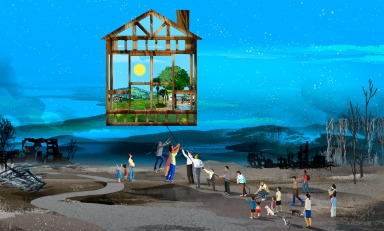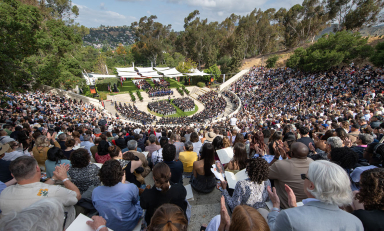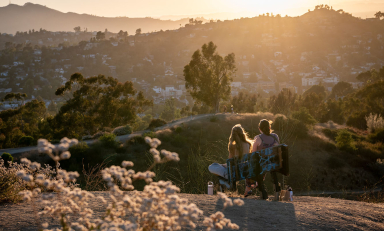Almost 800 activists, students, and community leaders from throughout Southern California filled Occidental College's Thorne Hall Thursday to take advantage of the unusual opportunity to speak directly to high-ranking Obama administration officials about conservation and environmental issues.
Audience members, who came from as far as Santa Barbara and Mojave, spoke passionately on everything from horses and urban river restoration to sportfishing and national parks to a group that included Secretary of the Interior Ken Salazar; EPA Administrator Lisa Jackson; Nancy Sutley, chair of the White House Council on Environmental Quality; and officials from the U.S. Department of Agriculture and the Army Corps of Engineers.
"Some of my colleagues may be surprised by this kind of turnout in Los Angeles. I'm not," Sutley, former Los Angeles deputy mayor for energy and environment, said at the opening of the America's Great Outdoors Initiative listening session. "People in Los Angeles are proud of their parks and open space. There are many people in this city working hard to restore and protect them in new and innovative ways."
Thursday's listening session drew the largest crowd to date in the national series that began last month and will continue through the summer.
In his welcoming remarks, Occidental President Jonathan Veitch provided several examples of such innovative approaches taken by faculty and students at Occidental, including the creation of "farm to school" and regional food hub programs, support of the effort to reclaim the Los Angeles River, and the promotion of automobile alternatives--symbolized by the 2005 ArroyoFest that temporarily converted the Pasadena Freeway into a space for pedestrians and bicyclists.
"Los Angeles is the place where one can imagine something very different, ‘a land of magical improvisation,' as the great writer Carey McWilliams put it," Veitch said.
Reflecting the diversity of the region, audience members at the main session and the eight smaller breakout sessions that followed represented a wide range of organizations and interests: Heal The Bay, off-highway vehicle enthusiasts, the Sierra Club, TreePeople, the California Cattlemen's Association, the Wilderness Society, Amigos de los Rios, the Sportfishing Conservancy, local land conservancies, and advocates for equestrians, national parks, urban open space, the Mojave Desert, and outdoor environmental science education for children.
Several common themes emerged from audience comments: the need for more financial resources for conservation efforts, for better inter-agency cooperation on the federal level to eliminate contradictory policies and practices that hamper conservation efforts, and the need to get more young people outdoors and into state and national parks.
"Generation Y doesn't know the difference between Yosemite and Yellowstone," one audience member said. "More people under 30 and more minorities need to be exposed to national parks."
Other comments made clear the challenges faced by federal, state, and local policymakers. While some audience members pressed for the preservation of additional urban open space and wilderness areas, off-highway vehicle advocates pushed back, arguing that off-road recreation areas are shrinking despite public demand for them, and need federal protection
Land-use policy conflicts also emerged, exemplified by the push to increase renewable energy by building large solar arrays in the Mojave Desert--a policy criticized by desert advocates as needlessly destructive of a fragile and beautiful ecosystem. "Our desert, an incredible treasure, should not become a parking lot for solar panels," said one audience member.
For more information on the Great Outdoors Initiative, go to http://www.doi.gov/americasgreatoutdoors/.



